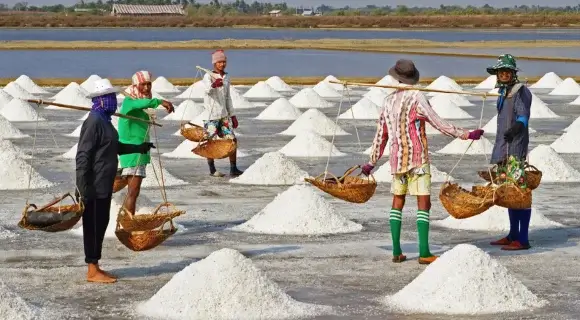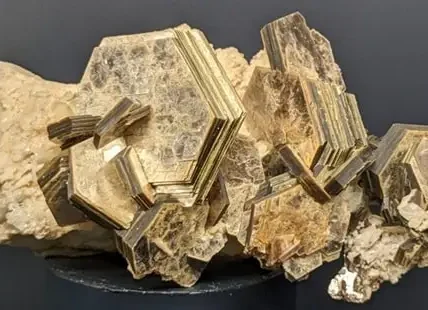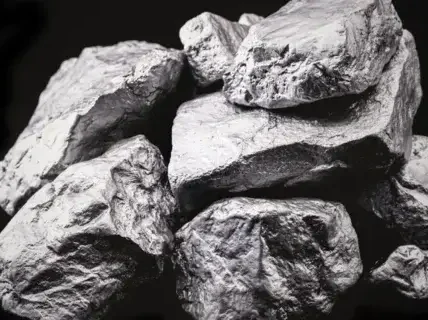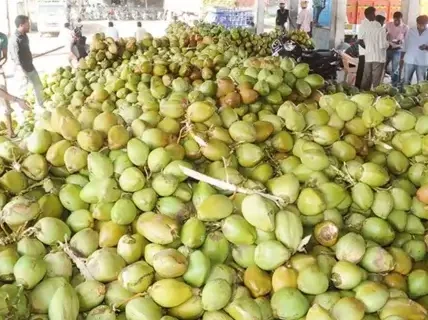Salt has been used to preserve food, enhanced the taste and even as payment since time in memory. Salt also goes by other names, namely rock salt, halite, common salt or table salt among others, and it is one of the most plentiful and cheap minerals on Earth and a must have for plant and animal life. Because salty is another one of the primary human sensations, it augments flavor in food. Its easily applicable flexibility and the enormous use of the mineral make the resource a cheap and available product globally. While the world keeps changing, salt demand is consistent and some specific nation’s are setting the pace in terms of volume of salt they produce. This research will concern the top 10 largest countries that manufacture salt in the world, characteristics relating to the production of salt and how it impacts several businesses. Each nation’s contribution to the global salt market, from China’s vast coastline output to the US and Germany’s complex salt mines indicate the continued relevance of the mineral amidst our growing civilization.
Countries With Highest Salt Production
1. China (64 million metric tons):
China produces 64 million metric tons of salt yearly, dominating the industry. Large salt flats and coastal locations with natural salt pans and evaporation ponds make salt extraction simpler in China, boosting output. This complex resource network benefits China’s growing population and industry. Chinese salt production affects the worldwide salt ecosystem as demand rises. Beyond its abundance, China’s diversified extraction techniques and geographical advantages make it a significant salt supplier. China dominates salt production with massive Shandong, Sichuan, and Guangdong mines and pans.
2. India (45 million metric tons):
India, the world’s second-largest salt producer, produces 45 million metric tons annually, proving its significance. India’s huge coastline lands and interior salt pans make sea salt and inland salt production ideal. India’s traditional salt manufacture and geographical advantage have created a thriving local and worldwide salt economy. Gujarat, Tamil Nadu, and Rajasthan produce most Indian salt. These salt centers meet the nation’s enormous demand with ancient and modern technology. Salt pans and coastal salt farms power this massive output.
3. United States (42 million metric tons):
The US produces 42 million metric tons of salt annually, ranking third. The nation’s salt industry depends on massive Louisiana, Texas, and Ohio mines. Strategically placed salt mining activities provide a continuous and significant contribution to the global salt market. Better mining and evaporation enhance US salt production. The nation maximizes production by serving many businesses with massive subsurface and pan salt sources. Salt is needed in food production and winter de-icing for safe transportation. The industrial applications of salt highlight its production value. Salt is important to the US economy. US production meets local needs and leads the globe in salt. Using cutting-edge technology and massive salt reserves, the US ensures a consistent supply of this vital mineral for national and global use, boosting its impact on global salt production.
4. Germany (15 million metric tons):
Germany produces 15 million metric tons of salt annually, ranking fourth in Europe and the globe. Due to its lengthy salt mining history, Germany generates most of its salt underground. Pure German salt is used in food, chemicals, and pharmaceuticals. Germany produces 15 million metric tons of salt yearly via huge mining. Bavaria and Saxony have huge underground salt deposits. Solution mining and rock salt extraction effectively generate salt in Germany. Cutting-edge techniques enhance output and show Germany’s salt industry technological innovation. Strong infrastructure helps the country dominate the global salt market. This infrastructure supports large-scale salt manufacturing from extraction to distribution. German salt production is world-class thanks to its high standards and investment in contemporary equipment and infrastructure.
5. Australia (13 million metric tons):
Australia’s vast, dry landscapes produce 13 million metric tons of salt yearly, ranking sixth globally. Salt production relies on solar evaporation from the nation’s abundant sunshine and salt flats. This salt extraction method is effective and suits Australia’s climate. Salt production relies on solar evaporation, excellent for Australia. These solar-powered devices evaporate saltwater, leaving valuable salt crystals. Salt flats, particularly in Western and South Australia, help this method. Lake MacLeod and Lake Eyre increase Australia’s salt output.
6. Canada (11 million metric tons):
Canada produces 11 million metric tons of salt yearly, sixth globally. Rock salt mining and brine evaporation produce the nation’s salt. Canada is committed to a varied salt supply with this comprehensive plan. Canada’s salt industry is crucial to winter road maintenance globally. Winter transportation in snowy places need Canadian salt. This essential function boosts Canada’s salt production. Canada leads the globe in salt production with 11 million metric tons. The projected resource and industrial infrastructure allocation in Ontario, Quebec, and Alberta concentrates salt production. Canada produces a lot of salt due to its massive salt deposits and advanced extraction processes.
7. Mexico (9 million metric tons):
Due to its salt deposits and shoreline, Mexico produces 9 million metric tons of salt yearly, ranking seventh worldwide. Salt assists agriculture, food processing, and chemical manufacturing, making it economically vital. Mexico’s position makes it a key North and South American supplier. Mexico contributes significantly to global salt supplies with nine million metric tons per year. Mexico’s salt industry’s many applications across multiple sectors show its commitment to excellence and its multifaceted impact on its economy and worldwide trade. Its extensive Gulf of Mexico and Pacific Ocean coastline helps Mexico generate salt. Mexico has many saltwater sources for salt mining due to its geography. Mexican salt output remains high due to its coastal resources and effective production techniques, strengthening its global salt market supremacy.
8. Chile (9 million metric tons):
Chile produces 9,000 metric tons of salt yearly, matching Mexico in tenth position. Innovative northern Chilean solar evaporation ponds create salt from seawater using abundant sunlight. Chile’s sustainability and capacity to employ natural resources for industrial purposes are shown by this ingenious solution. Chile produces 9 million metric tons of salt, demonstrating its global salt trade significance. Salt mining in the north is concentrated in the Atacama Desert. This desert’s environment and terrain make salt production ideal. In the Salar de Atacama, huge salt flats provide salt deposits. The effective utilization of these natural assets makes Chile a global salt producer.
9. Brazil (7.4 million metric tons):
Brazil produces 7.4 million metric tons of salt annually from its vast coastline and salt pans, making it the ninth-largest producer. Sea salt extraction and inland salt pans create salt nationwide. Brazil’s flexibility and commitment to industrial salt usage are seen in this strategy. Brazil’s 7.4 million metric tons of salt production strengthens its global supremacy. A strong supply chain is provided by the country’s coastal and interior salt production. Brazil’s salt industry supports food processing and chemicals, sustaining the economy. Brazil’s coastal locations are perfect for ocean-powered sea salt manufacturing. Inland salt pans boost Brazil’s salt production, showing its resource flexibility. This dual approach meets local demands and makes Brazil a global salt supplier.
10. Turkey (6.9 million metric tons):
Turkey produces 6.9 million metric tons of salt yearly, ninth worldwide. Turkish salt production is unusual since it employs rock salt and solar evaporation. Turkey’s multimodal approach demonstrates its ingenuity and cements its worldwide salt position. Turkey produces 6.9 million metric tons of salt, demonstrating its global relevance. Rock salt mining and sun evaporation demonstrate the country’s flexibility. This adaptability makes salt production powerful and resilient, fulfilling local and global market needs.
Conclusion:
Being among the 10 largest salt-producing nations indicates how much salt is an important resource all over the world and has a diversified impact in many industries. From vast coastal regions of China to the strategical salt mines of United States and Germany, the salt industry in both the countries is a reflection of their unique geographic preeminence as well as historical heritage. Since there is an increase in the global demand for salt in an unprecedented manner, these major producers become pivotal players in ensuring a continuity of supply of this crucial mineral for wide applications all around the globe.

Brandon is the cheif editor and writer at WorldUnfolds.com. With a passion for storytelling and a keen editorial eye, he crafts engaging content that captivates and enlightens readers worldwide.















